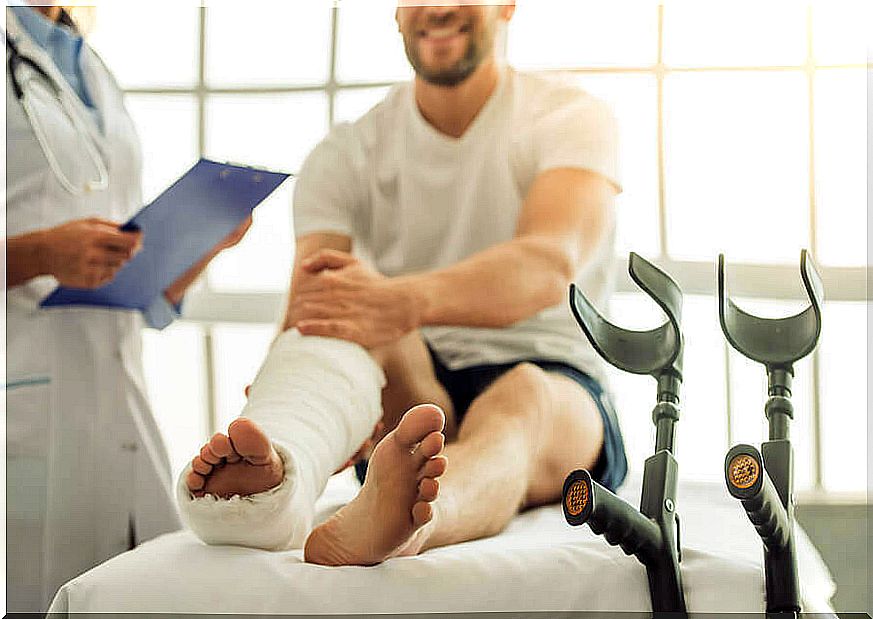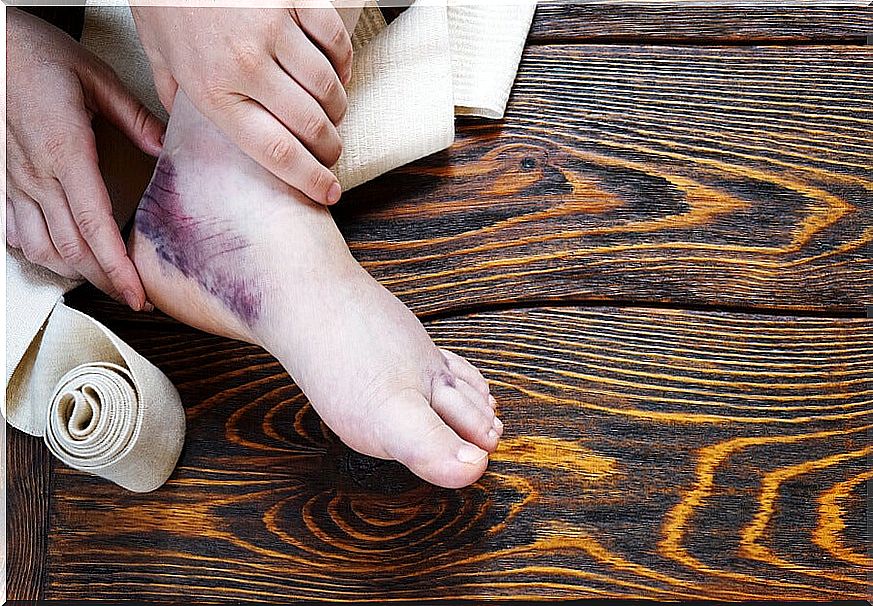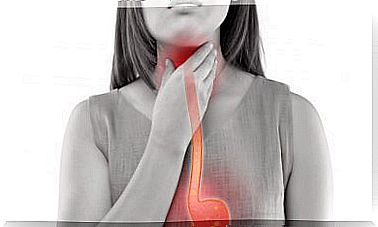Fracture Or Sprain: What’s The Difference?
In traumatology there are two injuries that are the most frequent: fracture and sprain. We all know someone who has gone through either of these two circumstances, if it does not turn out that we ourselves were in those situations.
As injuries are so common, it is logical that they lend themselves to confusion. Faced with a trauma that leaves pain in a limb, inflammation and impotence, it is valid to ask whether we are dealing with a fracture or a sprain.
The truth is that they are not the same and neither are their consequences. The fracture is more serious, although there are really serious sprains that put joints at risk and complicate the work, professional, sports development and quality of life of those who suffer them.
We have to establish first that a sprain is a typical ligament injury. In this case, the involved ligaments are stretched more than they should and cannot return to their natural position. The extreme of this situation is the rupture of the ligaments.
On the other hand, the fracture is defined as a break in continuity of the bone. That is, the bone tissue is interrupted, cut, deeply injured. In more understandable terms, a fracture is the breaking of a bone.
From sprain to fracture
Although the doubt about having suffered a fracture or sprain is valid, many believe that the first is a consequence of the poor treatment of the second. And this is not so. They are separate entities that are not part of the same injury process.
On the other hand, we can say that there are degrees of severity in these injuries, and in that sense we can mark a staggering from the slightest sprain to the fracture. Again we reiterate, it is not because one leads to the other, but because of their different severity.
So we would have:
- First degree of sprain: it is the mildest. The ligaments have been stretched a bit and are causing pain. There may be some swelling in the affected joint and fluid buildup – edema. Rest treatment and taking an anti-inflammatory are sufficient.
- Second degree of sprain: here the ligament strain is slightly greater than the previous degree. There are also some small breaks in the fibers. Kinesiology sessions are required for his recovery.
- Third degree of sprain: It is the most severe form of the sprain. Ligaments are cut, not just stretched. It requires a more intensive treatment with strict rest, movements with a supportive bra and specific physical therapy exercises.
- Simple fracture: it is the break of the bone that remains inside the body. It may or may not be accompanied by a close sprain due to the same trauma that caused the fracture.
- Exposed fracture: bone tissue breaks and part of it appears outside the body through a wound in the skin. The bone is in contact with the external environment.

Differences between both injuries
To differentiate between a fracture and a sprain, one must consider the symptoms, the way in which the trauma occurred and how the affected area was left after the trauma. The movements that are possible to perform once the injury is established are usually indicative of severity.
However, as soon as the lesion is established, they can be easily confused, since they share symptoms. Both cases begin with severe pain and inflammation. The area becomes inflamed by the same process that unleashes the injured body and by the accumulation of fluid due to those structures that stretch and break inside.
With bruises the situation is more complex. In general, fractures are bruised and most sprains are not. But there are bruises in severe sprains, and there may also be a fracture that does not express hematoma on the surface of the skin.
A key sign of a fracture is marked deformation of the injury site. The broken bone causes elevations of the skin that end in functional impotence. It is very difficult to specify a movement in a fractured bone.

First aid for fracture and sprain
Once the injury is determined as a sprain, the steps that must be followed to provide first aid at the scene would be:
- Immobilization: the sprained joint should be still.
- Local cold : cold in the joint reduces inflammation, thereby reducing pain.
- Bandage: a tight or compressive bandage is very useful in sprains. In addition to promoting immobilization, the bandage controls inflammation.
- Elevated limb: since we do not want more fluid to accumulate in the damaged joint, we must raise it to drain that excess edema.
Instead, if the injury is identified as a fracture, first aid would be:
- Touching as little as possible: it is not the same as a sprain and you cannot just manipulate a broken bone like that. The area of the injury must be isolated, avoiding contact.
- Promote circulation: if the injured person suffered a broken limb and has an object that can interrupt the flow of blood, try to remove it. Suppose you have a broken wrist and you have a watch, then we should try to remove the watch by touching the affected area as little as possible.
- Control bleeding: if there is bleeding next to the fracture, we are obliged to compress the point where the blood comes out. Large and exposed fractures are capable of causing sudden blood loss that puts the recovery of a limb at risk.
As we can see, there are many differences between fractures and sprains, although they can present similar initial symptoms. It is important to establish an accurate diagnosis, since the treatment depends on that.








